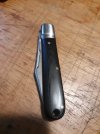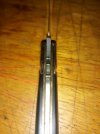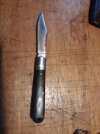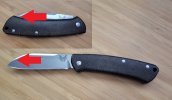- Joined
- May 16, 2018
- Messages
- 4,183
So who makes or made traditional knives with stop pins? I don't think I have ever seen one. But there are a lot of knives, I haven't seen.
O.B.
The Rough Ryder reserve series has stop pins. And while some aren't quite traditional in design most are still constructed traditionally, just with the addition of a stop pin. My Kershaw culpepper jack has one as well,otherwise its pretty traditional in construction.I voted against stop pins because I've never seen a traditional knife with one and assume it's probably these recently popular borderline knives that I'm not into.
(Bolsters were fluted by me btw)










